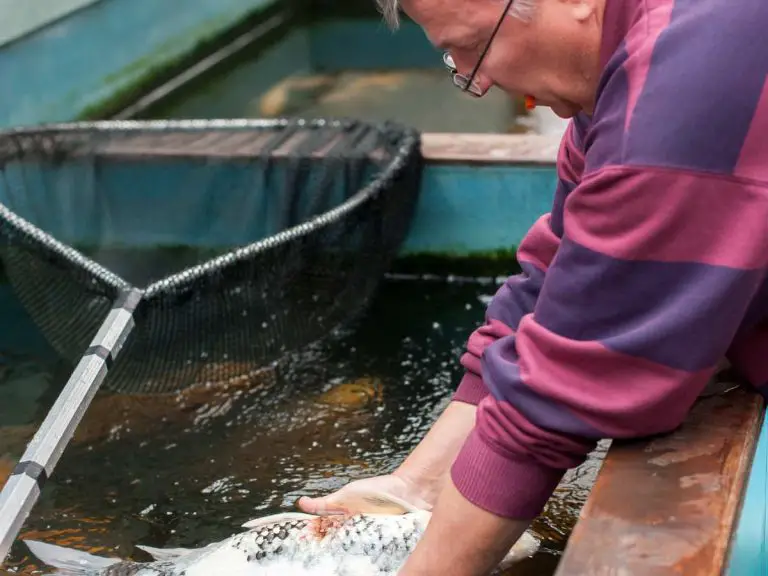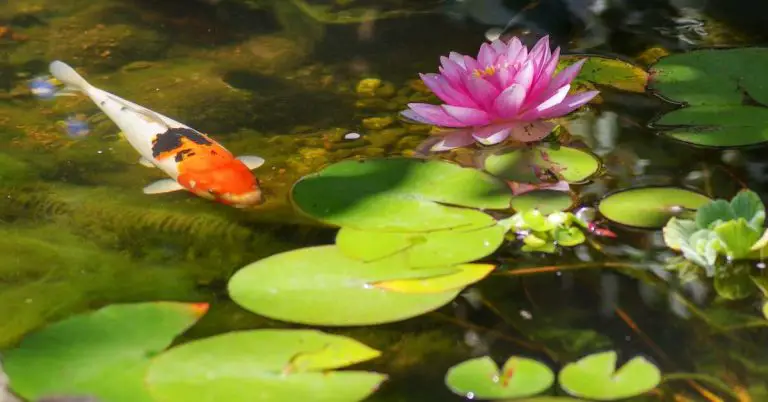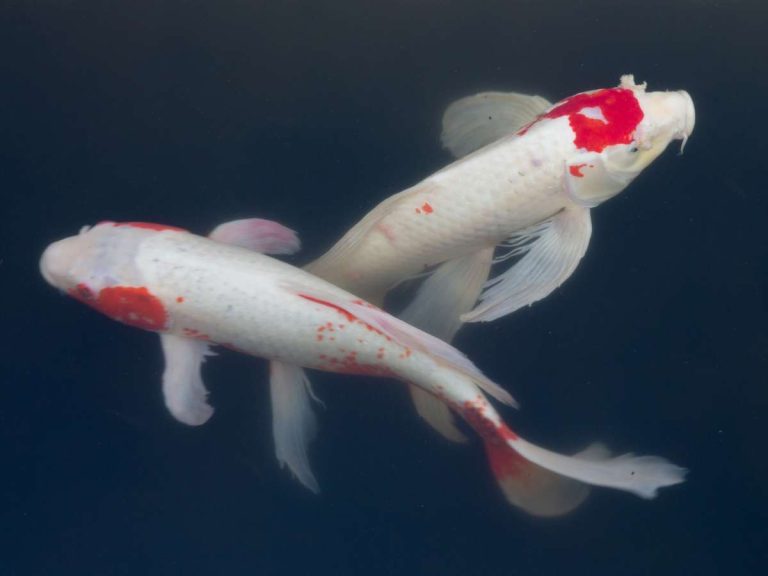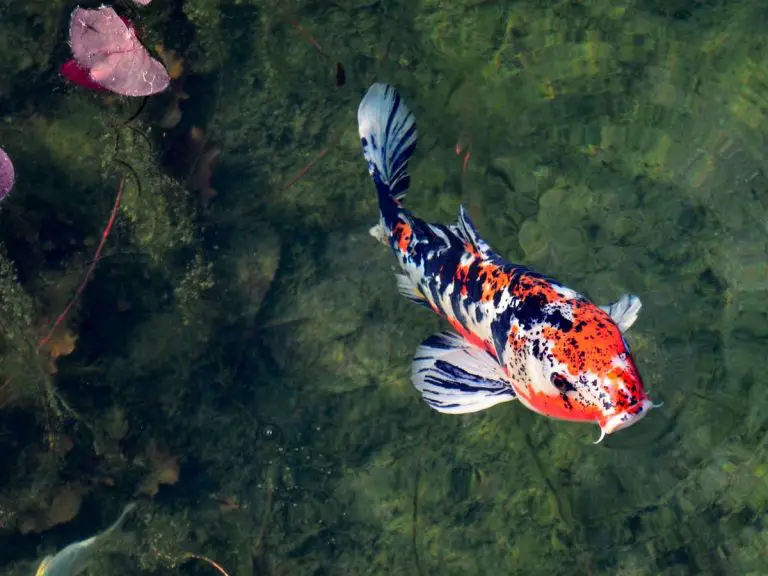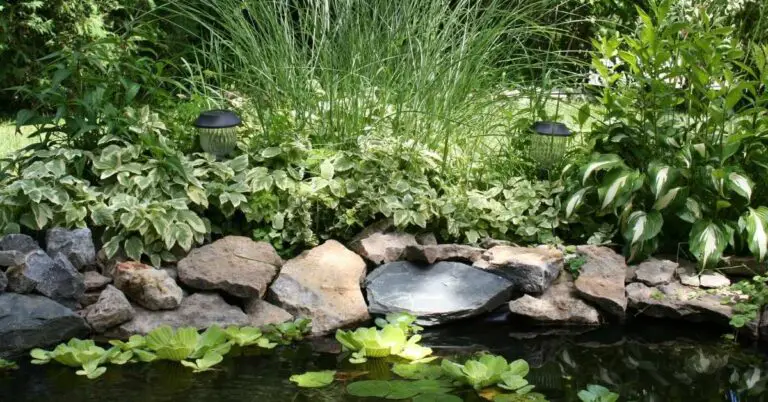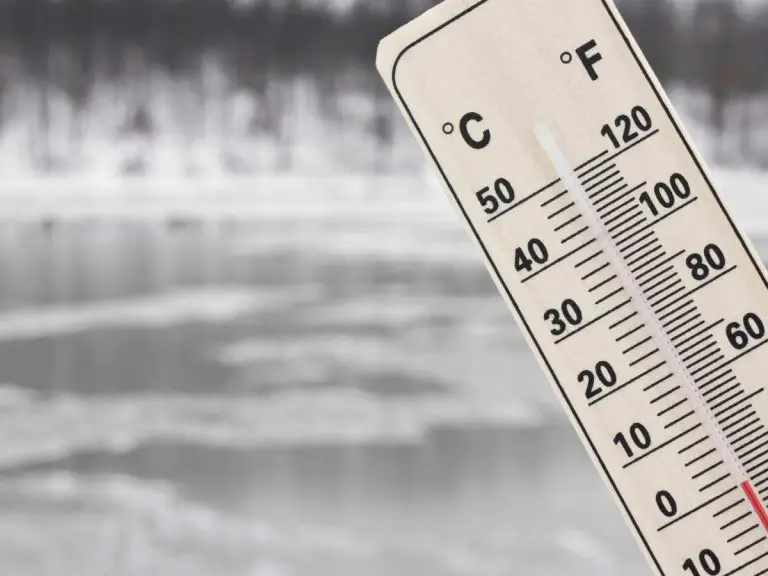Koi vs Goldfish Guide: Differences, Similarities, and How to Choose Between Them
Are you curious about the differences and similarities between koi and goldfish? Wondering which fish would be a better fit for your pond or aquarium? From their physical characteristics to their care requirements, and even their behavior, let’s explore everything you need to know when comparing these beautiful fish.
Koi and goldfish may have distinct characteristics and care requirements, but they also share some similarities.
While both are generally visually appealing, they differ primarily in size and habitat requirements: koi can grow much larger, often reaching lengths of up to 3 feet, and typically require spacious ponds with specific water conditions.
On the other hand, goldfish are smaller and can thrive in smaller ponds or aquariums.
Additionally, while both Koi and Goldfish come in various colors and patterns, koi have a more diverse range of colorations and are often more intricately patterned than goldfish.
In this guide, we’ll cover Koi vs Goldfish care requirements, including feeding guidelines, water maintenance, and disease prevention.
And if you’re struggling to choose between koi and goldfish, we’ve got you covered. I’ll walk you through the consideration factors, pros and cons, and help you align your personal preferences and goals.
So keep reading to uncover the world of koi and goldfish and gain a deeper understanding of these captivating creatures.
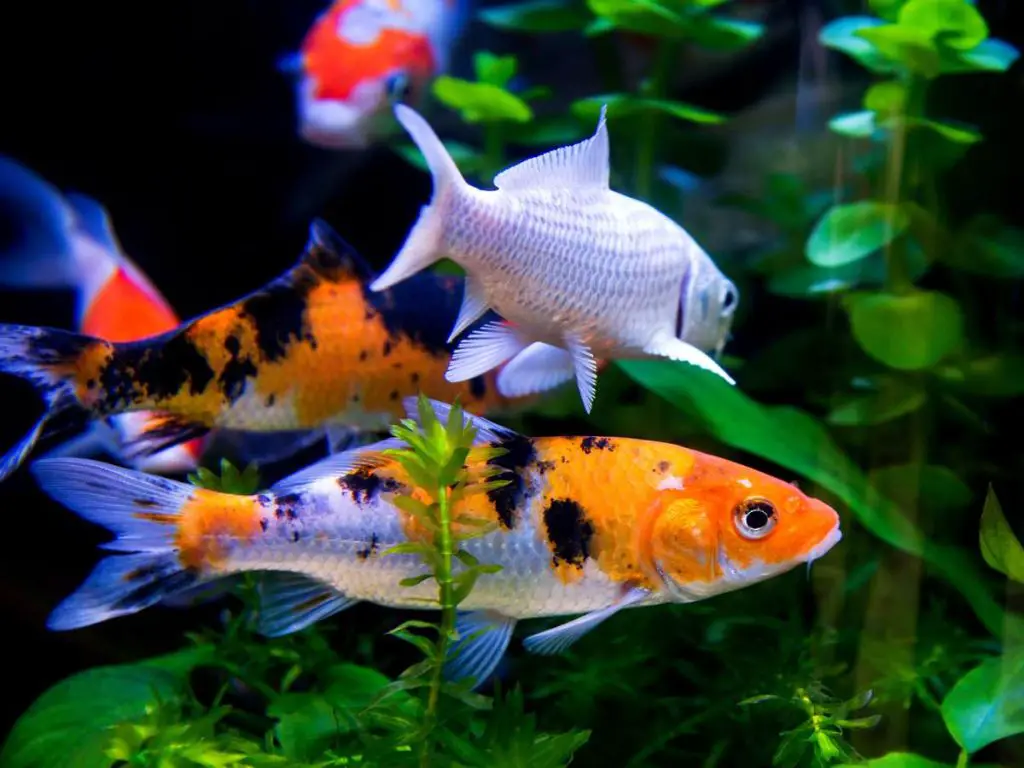
Physical Differences Between Koi and Goldfish
When it comes to physical appearance, koi and goldfish have notable differences that set them apart. Let’s get into their contrasting characteristics.
| Feature | Koi | Goldfish |
|---|---|---|
| Size | Up to 3 feet in length | Typically 6-8 inches (can vary by type) |
| Body Shape | Elongated and streamlined | Varies; can be elongated or rounded |
| Coloration | Diverse range with intricate patterns; includes colors like white, black, red, yellow, blue, and green | Commonly orange but can be white, red, black, and combinations thereof; patterns are generally simpler |
Size
One of the most obvious differences between koi and goldfish is their size. Koi are generally much larger than goldfish, with some reaching lengths of up to three feet!
Goldfish, on the other hand, tend to be smaller and more compact, usually measuring around six inches in length. This size difference can greatly impact the type of pond or aquarium you will need for these fish.
Body Shape
Another physical distinction between koi and goldfish is their body shape. Koi have a sleeker and more streamlined body profile, resembling that of a torpedo. Their body is built for swimming swiftly through the water with ease.
On the other hand, goldfish have a rounder and more compact body shape. Their bodies are not as agile as those of koi, but they come in various shapes like round, egg-shaped, and even fantail.
Coloration
Color is another feature where koi and goldfish show striking differences. Koi are known for their vibrant and diverse color patterns. They can display a wide range of colors, including white, yellow, orange, red, black, and even metallic hues.
Goldfish, as their name suggests, often have a golden or orange hue. However, they come in many other colors too, including white, black, red, and calico. While both koi and goldfish offer beautiful coloration, koi tend to have a more extensive variety in their patterns and shades.
Ideal Water Conditions Differences Between Koi & Goldfish
When it comes to the environment, koi and goldfish have some distinct preferences and requirements. Let’s explore their differences in water temperature, water quality, and suitability for ponds or aquariums.
| Koi | Goldfish | |
|---|---|---|
| Water Temperature | 59-77°F (15-25°C) | 50-78°F (10-26°C) |
| Water Quality | Requires good filtration due to size and waste; prefers slightly alkaline water | Tolerant of various conditions but prefers well-filtered water; can thrive in a range of pH levels |
| Suitability | Best suited for outdoor ponds due to size and need for space | Suitable for both ponds and aquariums; size and type of goldfish can dictate best environment |
| pH Requirements | Prefers slightly alkaline conditions, typically around 7.5-8.5 | Generally adaptable, but prefers a pH range of 6.5-8.0 |
Water temperature preferences
Koi and goldfish have different preferences when it comes to water temperature. While goldfish are more adaptable and can tolerate a wide range of temperatures, koi prefer cooler water. They thrive in temperatures between 60 to 75 degrees Fahrenheit.
Goldfish, on the other hand, can tolerate temperatures ranging from 50 to 80 degrees Fahrenheit. So if you live in a region with extreme temperatures, you might want to consider the temperature requirements of each species.
Water quality requirements
Both koi and goldfish require clean and well-maintained water, but koi are more sensitive to water quality. They are prone to stress and diseases if the water conditions are not optimal. Koi need a well-filtered pond or aquarium with excellent circulation to maintain good water quality.
Goldfish are relatively hardy and can tolerate slightly less pristine conditions, but they still require regular water changes and a suitable filtration system. Monitoring the ammonia, nitrite, and nitrate levels is crucial for both species to ensure a healthy environment.
Pond or aquarium suitability
Another difference between koi and goldfish is the suitability of their living environment. Koi are better suited to large ponds due to their larger size and more active swimming behavior. They require ample space to thrive and show off their vibrant colors.
Goldfish, on the other hand, can adapt to smaller ponds or even aquariums. They are smaller in size and have a more sedentary nature compared to koi. If you have limited space or prefer a more contained setting, goldfish might be the better option for you.
Behavioral Differences Between Koi and Goldfish
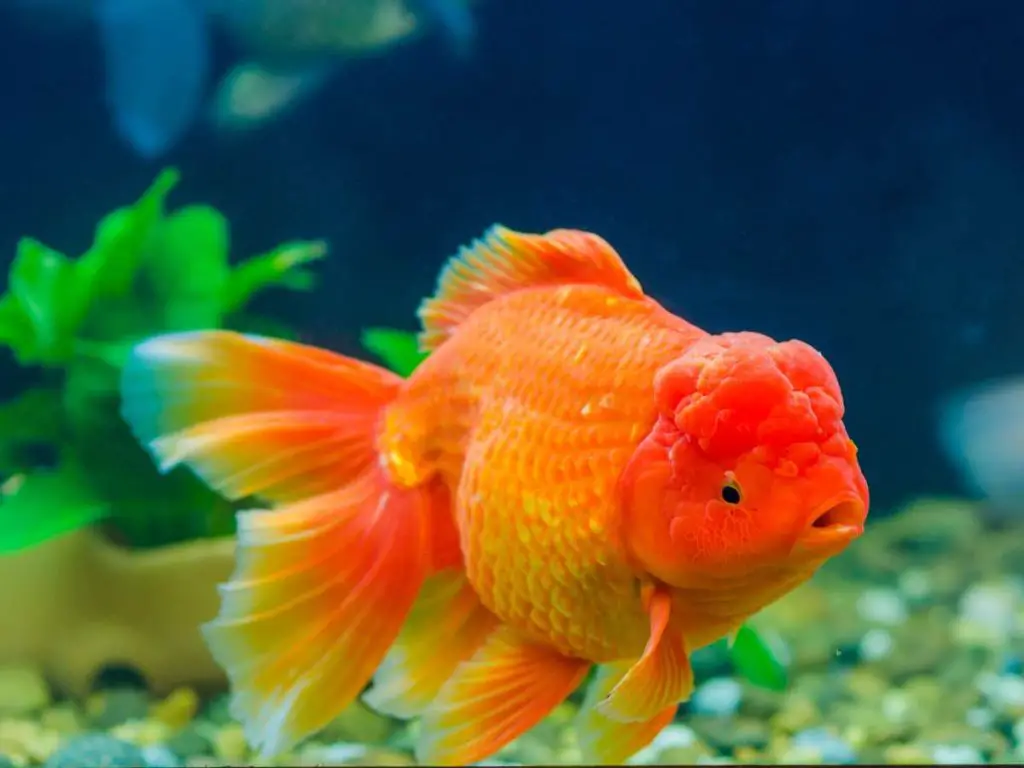
Understanding the behavioral differences between koi and goldfish can greatly influence your decision when choosing the right fish for your pond. So, make sure you know the differences before purchasing any Koi or Goldfish!
| Feature | Koi | Goldfish |
|---|---|---|
| Feeding Behavior | Koi are aggressive feeders and will often come to the surface to greet feeders. They can recognize their owners and may eat from hand. | Goldfish are also eager feeders but might be less interactive than koi. They will readily feed at the surface. |
| Social Behavior | Koi are social and enjoy being with other koi. They can form “schools” or groups in ponds and often swim in patterns. | Goldfish are sociable and can mix well with other goldfish varieties. They are generally peaceful and can coexist with koi. |
| Breeding Behavior | Koi breeding requires specific conditions and can be more challenging. They scatter their eggs on pond surfaces. | Goldfish breeding is relatively easier. They also scatter eggs, and in a suitable environment, can breed prolifically, potentially overcrowding a pond. |
Feeding behavior
Koi and goldfish have different feeding behaviors. Koi are bottom feeders and prefer to graze on the pond floor, searching for food particles. They have a hearty appetite and will eat almost anything, including plants, insects, and even small crustaceans.
Goldfish, on the other hand, are surface feeders and have an upward-facing mouth that allows them to skim food from the water’s surface. They enjoy floating pellets or flakes and are less likely to eat plants or insects.
Social behavior
Both koi and goldfish are social creatures, but their social behaviors differ. Koi are known to be highly social and can form tight-knit groups, often referred to as “schools.” They are active swimmers and enjoy interacting with other fish in their pond.
Goldfish, while also social, tend to be less active and more solitary in their behavior. They can coexist peacefully with other goldfish or koi but may not actively seek out social interaction as much as koi do.
Breeding behavior
The breeding behaviors of koi and goldfish are distinct. Koi have a complex breeding process that involves courtship behavior and multiple partners. They engage in elaborate chasing and nudging rituals to initiate spawning.
Goldfish, on the other hand, have a simpler breeding process. They are egg scatterers, meaning they release their eggs and sperm into the water, where fertilization occurs. Goldfish breeding can happen quickly and easily, often resulting in numerous offspring.
Care Requirements
Caring for koi and goldfish involves meeting their specific needs regarding feeding, water maintenance, and disease prevention.
Feeding guidelines
Both koi and goldfish are omnivores, so their diets should consist of a combination of live, frozen, and dry foods. Feed them 2-3 times a day, but ensure they consume all the food within 5 minutes to prevent overfeeding. Adjust the amount of food based on their size and activity level. A general rule is to feed them an amount that they can eat in 5 minutes without leaving any leftovers.
Water maintenance
Regular water maintenance is crucial for the health of koi and goldfish. Invest in a good filtration system to keep the water clean and free from ammonia and nitrate buildup. Test the water regularly for pH, ammonia, nitrate, and nitrite levels to ensure they’re within the appropriate range. Perform partial water changes every 1-2 weeks to maintain optimal water quality. Aim to change 10-20% of the water volume, depending on the stocking density and filtration capacity.
Disease prevention and treatment
Preventing diseases is easier and less stressful than treating them. Maintain good water quality, provide a balanced diet, and avoid overcrowding to minimize the risk of diseases. Quarantine any new fish before introducing them to the main pond or aquarium to prevent the spread of infections. Keep an eye out for signs of illness, such as abnormal behavior, loss of appetite, or physical abnormalities. If a disease does occur, promptly treat it using appropriate medications and follow the instructions provided by a veterinarian or aquatic expert.
Similarities Between Koi and Goldfish
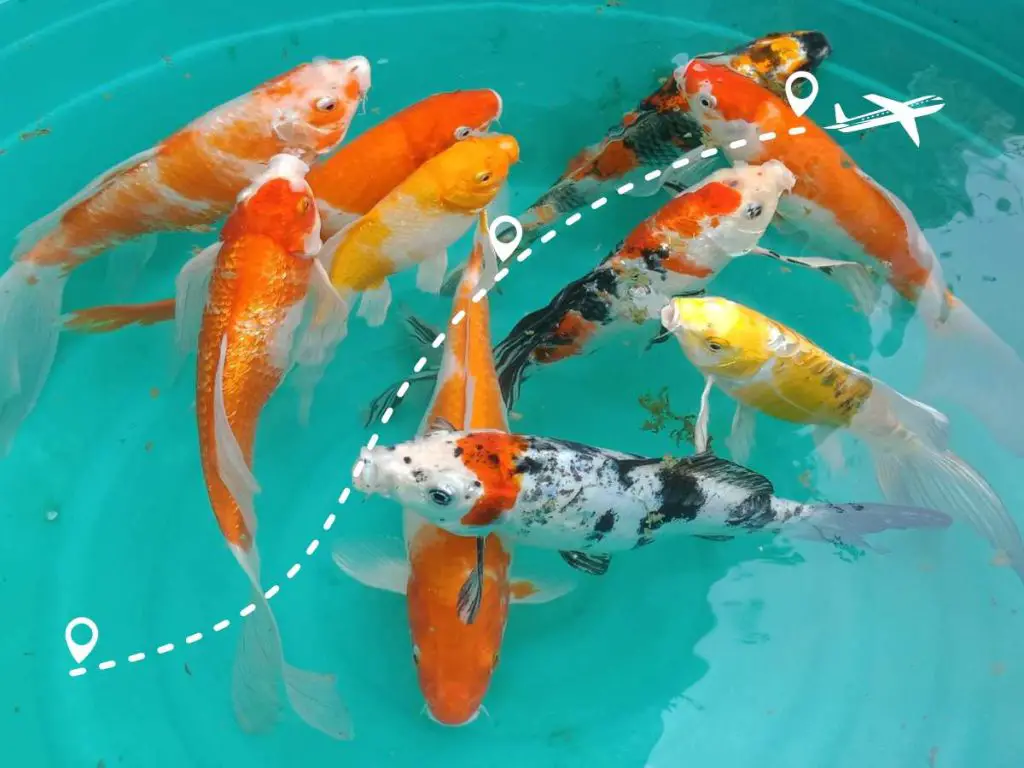
Koi and goldfish, two of the most popular ornamental fish, might seem worlds apart at first glance. However, when you dive a little deeper, you’ll find they have more in common than you might think.
- Origin: Both koi and goldfish have roots in East Asia, with goldfish originating from China and koi from Japan.
- Diet: They share similar dietary preferences, enjoying a mix of commercial pellets, flakes, vegetables, and insects.
- Lifespan: With proper care, both koi and goldfish can live for several decades, making them long-term companions for their owners.
- Hardy Nature: Both species are known for their resilience, able to tolerate a variety of water conditions and temperatures.
- Breeding: Koi and goldfish both lay eggs, which attach to surfaces until they hatch.
- Social Behavior: Both fish are social creatures, often seen swimming in groups and interacting with their pond or tank mates.
- Outdoor Living: Both koi and goldfish thrive in outdoor ponds, enjoying the spacious environment and natural ecosystem.
- Color Varieties: Both species come in a dazzling array of colors and patterns, making them a visual delight for owners and onlookers.
- Active Swimmers: Koi and goldfish are both active swimmers, often seen gracefully gliding through the water, especially during feeding times.
- Predation: Both fish types need protection from common predators like herons, raccoons, and cats when kept in outdoor ponds.
Diet
When it comes to chowing down, both koi and goldfish aren’t too picky. They’re like the adventurous eaters of the fish world, always ready to try something new. From commercial pellets and flakes to fresh veggies and the occasional insect, these fish are all about variety.
But remember, just like us, they thrive best on a balanced diet. So, while they might nibble on anything you offer, it’s essential to ensure they get the right nutrients to keep them vibrant and healthy.
Lifespan
Ever thought of having a pet that’s in it for the long haul? Look no further than koi and goldfish. These fish are the epitome of commitment, often gracing our lives for several decades when given the right care.
It’s not just about surviving, though. With the proper environment and attention, these fish can thrive, living anywhere from 20 to 40 years, and even older in some cases. Imagine all the memories you’ll make with such long-lived aquatic buddies by your side!
Hardy Nature
If there were a fishy equivalent of a superhero, it would probably be a mix of koi and goldfish. Their superpower? An incredible resilience that makes them adaptable to various conditions.
Whether you’re a newbie just dipping your toes into the world of aquatics or a seasoned pro, these fish are a dream. They’re forgiving of mistakes and can handle a range of water conditions, from temperature fluctuations to different water qualities. It’s this hardy nature that has cemented their place in the hearts of many fish enthusiasts.
In the grand scheme of things, while koi and goldfish each bring their unique flair to the table, they also share some undeniable similarities. From their eclectic palates to their impressive lifespans and robust nature, these fish are a testament to the wonders of the aquatic world.
So, whether you’re team koi, team goldfish, or a bit of both, one thing’s for sure: with the right care, these fish will brighten up your life in more ways than one.
Choosing Between Koi and Goldfish
When it comes to deciding between koi and goldfish, there are a few important factors to consider. First and foremost is space availability. Koi typically require more room to swim and grow compared to goldfish. If you have a large pond or aquarium, koi might be the better choice for you. On the other hand, if you have limited space, goldfish can thrive in smaller environments.
Another consideration is the desired pond or aquarium setup. Koi are better suited for outdoor ponds with plenty of space and natural filtration, while goldfish can adapt to both indoor and outdoor setups. If you prefer a low-maintenance option, goldfish might be more suitable for you.
Cost Considerations
Lastly, budget considerations can play a role in your decision. Koi tend to be more expensive than goldfish, especially if you’re looking for high-quality, show-grade specimens.
Koi, especially those fancy breeds, will usually set you back more than goldfish right from the get-go. Koi also generally need bigger ponds – that’s more digging, more water, and more maintenance. Plus, koi have a taste for the finer things when it comes to food, and if they get sick, their healthcare isn’t cheap either.
Goldfish are a more wallet-friendly option. They do well in smaller ponds and aren’t too picky about their meals. So, if you’re looking for a more budget-friendly splash of color in your backyard, goldfish might be your go-to. But if you’re all in for a premium pond experience, koi could be worth the investment.
| Koi | Goldfish | |
|---|---|---|
| Initial Purchase | Typically more expensive, especially for rare breeds. | Generally affordable, with common varieties being cheap. |
| Pond Construction | Requires larger, deeper ponds, increasing costs. | Can thrive in smaller ponds, leading to lower costs. |
| Maintenance | Higher due to size and specific needs. | Relatively lower, especially for hardy varieties. |
| Diet & Feeding | Specialized diet can be pricier. | Less specialized diet, often more affordable. |
| Healthcare & Treatment | Potential for higher vet bills due to size and value. | Typically less expensive to treat and care for. |
Pros and Cons of owning Koi vs Goldfish
Let’s weigh the pros and cons of koi and goldfish to help you make an informed decision.
| Koi | Goldfish | |
|---|---|---|
| Pros | Stunning color variations Dramatic growth potential Aquatic plant compatibility Suitable for larger ponds | Wide variety of shapes and colors Hardy and adaptable Can be kept in smaller ponds or aquariums Less expensive |
| Cons | Require more space and filtration Higher cost and maintenance Less suitable for indoor setups | More prone to health issues Smaller growth potential Possible compatibility issues with aquatic plants May require more frequent water changes |
Personal preferences and goals
In the end, your personal preferences and goals should be the ultimate deciding factors. If you are an avid pond enthusiast with a large outdoor space and a passion for vibrant colors, koi might be the perfect choice for you.
However, if you’re just starting out and prefer a more budget-friendly option that can adapt to various environments, goldfish could be the way to go.
Consider what you hope to achieve with your pond or aquarium, whether it’s a serene and harmonious display or a lively and dynamic ecosystem. Research the care requirements and characteristics of both koi and goldfish, and think about what aligns best with your lifestyle and commitment level.
Remember, each fish has its unique charm and beauty, and both koi and goldfish can bring joy and tranquility to your aquatic oasis. So, take your time, explore your options, and make a choice that brings you fulfillment and happiness.
Final Thoughts
So there you have it, a comprehensive guide comparing koi and goldfish. We explored their physical differences, environmental needs, behavioral traits, and care requirements.
Key Takeways:
- Koi and goldfish have distinct characteristics and care requirements, but they also share some similarities.
- Physically, koi are larger and have a more streamlined body shape compared to goldfish.
- Koi and goldfish also differ in their coloration, with koi exhibiting more vibrant patterns.
- They have different water temperature preferences and water quality requirements.
- Garden ponds are suitable for both koi and goldfish, while goldfish can also thrive in aquariums.
- Feeding, social, and breeding behaviors vary between the two species.
- When it comes to care requirements, both koi and goldfish need proper feeding, water maintenance, and disease prevention.
- They share similarities in terms of their diet, lifespan, and hardiness.
- Choosing between koi and goldfish requires considering factors like space availability, desired setup, and budget.
- Ultimately, personal preferences and goals play a crucial role in deciding which species is the right fit for you.
Now armed with detailed insights, you can confidently make an informed decision. Whether you choose koi or goldfish, creating a beautiful and thriving pond or aquarium will surely bring you joy and fulfillment.
Related Questions
Can koi and goldfish live together in the same pond?
Yes, koi and goldfish can live together in the same pond as they are both freshwater fish and have similar care requirements. However, it is important to keep in mind that koi can grow much larger than goldfish and may require a larger pond space to swim freely. Additionally, goldfish can be more agile and may compete with koi for food, so it’s important to ensure that there are enough feeding spots for all the fish in the pond.
Can koi and goldfish breed with each other?
While koi and goldfish belong to the same family, they are considered different species and cannot interbreed naturally. The offspring of any attempted crossbreeding between koi and goldfish are usually infertile and cannot reproduce. If you are interested in creating hybrid fish, it is best to consult with a professional breeder who specializes in fish genetics.

